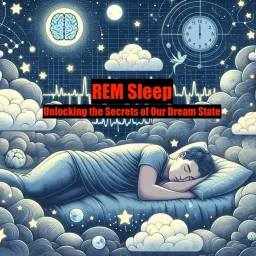Sleep Divorce

Exploring the Concept of Sleep Divorce: A Path to Better Rest and Relationship Health In the fast-paced, high-stress world we live in, the importance of a good night's sleep cannot be overstated. Quality sleep is essential for physical and mental health, cognitive function, and overall well-being. However, for many couples, sharing a bed can lead to a host of challenges that compromise the quality of their sleep. Enter "sleep divorce," a term that has been gaining traction in recent years as a potential solution to this problem. Despite its somewhat alarming name, sleep divorce does not imply a lack of love, intimacy, or commitment in a relationship. Rather, it is a practical arrangement where couples choose to sleep in separate beds or even separate rooms to ensure that both partners can get the restful sleep they need. This article will delve into the reasons behind sleep divorce, its potential benefits, and how couples can navigate this arrangement while maintaining a strong and healthy relationship. There are numerous factors that can contribute to a couple's decision to pursue a sleep divorce. One of the most common issues is differing sleep schedules. In today's world, it's not unusual for partners to have varying work hours or personal preferences when it comes to bedtime and wake-up times. One partner may be an early bird, ready to start their day at the crack of dawn, while the other is a night owl who prefers to burn the midnight oil. These mismatched schedules can lead to disruptions in sleep patterns, leaving one or both partners feeling groggy and unrested. Another major culprit when it comes to sleep disturbances is snoring or sleep apnea. Snoring is a common issue that affects a significant portion of the population, and it can be a major source of frustration and sleep loss for the partner of the snorer. Sleep apnea, a more serious condition that involves repeated pauses in breathing during sleep, can not only disrupt the sleep of the affected individual but also their partner, who may be awakened by the snoring or gasping sounds associated with the condition. Restlessness is another factor that can make sharing a bed a challenge. Some individuals are simply more restless sleepers than others, tossing and turning throughout the night, which can be disruptive to their partner's sleep. This can be especially problematic if one partner is a light sleeper who is easily awakened by movement or noise. Temperature preferences can also play a role in sleep compatibility. Some people prefer a cool, crisp sleeping environment, while others like to be cozy and warm. When partners have different temperature preferences, finding a middle ground can be a struggle, leading to discomfort and difficulty falling or staying asleep.
Finally, the presence of children or pets in the bed can also contribute to sleep disturbances. While many couples enjoy the closeness and bonding that comes with co-sleeping with their little ones or furry friends, it's no secret that kids and animals can be restless, noisy, and space-invading bed partners. While the idea of sleeping separately from one's partner may seem counterintuitive to the goal of maintaining a close and intimate relationship, there are actually several potential benefits to a sleep divorce arrangement. First and foremost, sleeping in separate beds or rooms can lead to improved sleep quality for both partners. By creating an optimal sleep environment tailored to their individual needs and preferences, each person can fall asleep more easily, stay asleep longer, and wake up feeling more rested and refreshed. This can be especially beneficial for individuals who struggle with insomnia, as creating a peaceful, distraction-free sleep space can make a world of difference. Better sleep quality, in turn, can have a profound impact on overall health and well-being. Quality sleep is essential for physical health, as it allows the body to repair and rejuvenate itself. It also plays a crucial role in mental health, as lack of sleep can contribute to a host of issues, including irritability, anxiety, and depression. By prioritizing sleep and ensuring that both partners are getting the rest they need, a sleep divorce arrangement can help reduce stress levels and promote better overall health. Interestingly, a sleep divorce can also have positive effects on the relationship itself. When both partners are well-rested, they are more likely to be patient, understanding, and emotionally available to one another. Sleep deprivation, on the other hand, can lead to short tempers, irrational reactions, and a lack of empathy, all of which can put a strain on even the strongest of relationships. By ensuring that both individuals are getting the sleep they need, a sleep divorce can actually help foster a stronger, more harmonious partnership. Another potential benefit of a sleep divorce is the opportunity for each partner to have their own personal space. While sharing a bed can be a wonderful way to foster closeness and intimacy, it's also important for individuals to have a place that feels entirely their own. Having a separate sleeping space can provide a sense of autonomy and privacy, which can be especially important for those who are introverted or who simply value their alone time. Of course, the decision to pursue a sleep divorce is not one that should be made lightly, and it's natural for couples to have concerns about how this arrangement might impact their relationship. One of the most common worries is that sleeping separately will lead to a decrease in intimacy and physical closeness. However, it's important to remember that a sleep divorce doesn't have to mean the end of cuddle sessions or pillow talk. Couples can still make a point of spending quality time together in bed before parting ways for the night, whether that means watching a favorite TV show, reading together, or engaging in intimate activities. The key is to be intentional about maintaining that physical connection, even if it doesn't involve sleeping in the same bed. Communication is also crucial when it comes to navigating a sleep divorce. It's important for both partners to be open and honest about their reasons for wanting to try this arrangement, and to approach the conversation with empathy and understanding. Emphasizing that the decision is a practical one, made in the interest of both individuals' health and well-being, can help ensure that neither partner feels rejected or unloved. Practical Tips for Implementing Sleep Divorce If a couple does decide to give sleep divorce a try, there are several practical tips that can help make the transition as smooth as possible. One approach is to start gradually, perhaps sleeping separately a few nights a week to see how it impacts sleep quality and the relationship dynamic. This can help both partners ease into the new arrangement and make any necessary adjustments along the way. Creating comfortable, inviting sleep spaces for each partner is also key. This might involve investing in high-quality bedding, experimenting with different mattress types or firmness levels, or adding personal touches like favorite photos or soothing scents. The goal is to create an environment that promotes relaxation and restful sleep. Regular check-ins are also important to ensure that both partners are comfortable with the arrangement and that it's having the desired effect. This might involve discussing sleep quality, energy levels, and overall mood, as well as any concerns or adjustments that need to be made. Finally, making a point of prioritizing quality time together during waking hours can help maintain a strong connection and intimate bond, even if partners are sleeping separately. This might mean setting aside dedicated time for date nights, shared hobbies, or simply enjoying a morning coffee together. As the concept of sleep divorce has gained more mainstream acceptance, it has begun to influence trends in home design and real estate. In high-end luxury homes, "snore rooms" are becoming an increasingly popular feature. These rooms are specifically designed to provide a comfortable, quiet sleeping environment for one partner, often with features like soundproofing, blackout curtains, and luxurious bedding. The inclusion of snore rooms in luxury home design is a testament to the growing recognition of the importance of sleep for overall health and well-being. It also reflects a willingness among affluent homebuyers to invest in features that promote rest and relaxation, just as they might invest in a gourmet kitchen or a spa-like bathroom. Broader Acceptance and Cultural Shifts The rise of sleep divorce and the inclusion of snore rooms in luxury homes are part of a broader cultural shift toward prioritizing self-care and wellness. In recent years, there has been a growing awareness of the critical role that sleep plays in overall health, and more and more individuals are taking steps to ensure that they are getting the rest they need. This shift is also reflected in the increasing acceptance of unconventional sleeping arrangements. Where once the idea of couples sleeping separately might have been seen as a sign of a troubled relationship, today it is more likely to be viewed as a practical solution to a common problem. In many ways, the acceptance of sleep divorce is part of a larger movement toward customization and personalization in all areas of life. Just as individuals are increasingly seeking out products and experiences that are tailored to their unique needs and preferences, so too are they looking for ways to optimize their sleep environment for maximum comfort and rest. Sleep divorce may not be the right solution for every couple, but for those who are struggling with sleep compatibility issues, it can be a path to better rest and a stronger, healthier relationship. By prioritizing individual sleep needs and finding creative solutions to common challenges,































